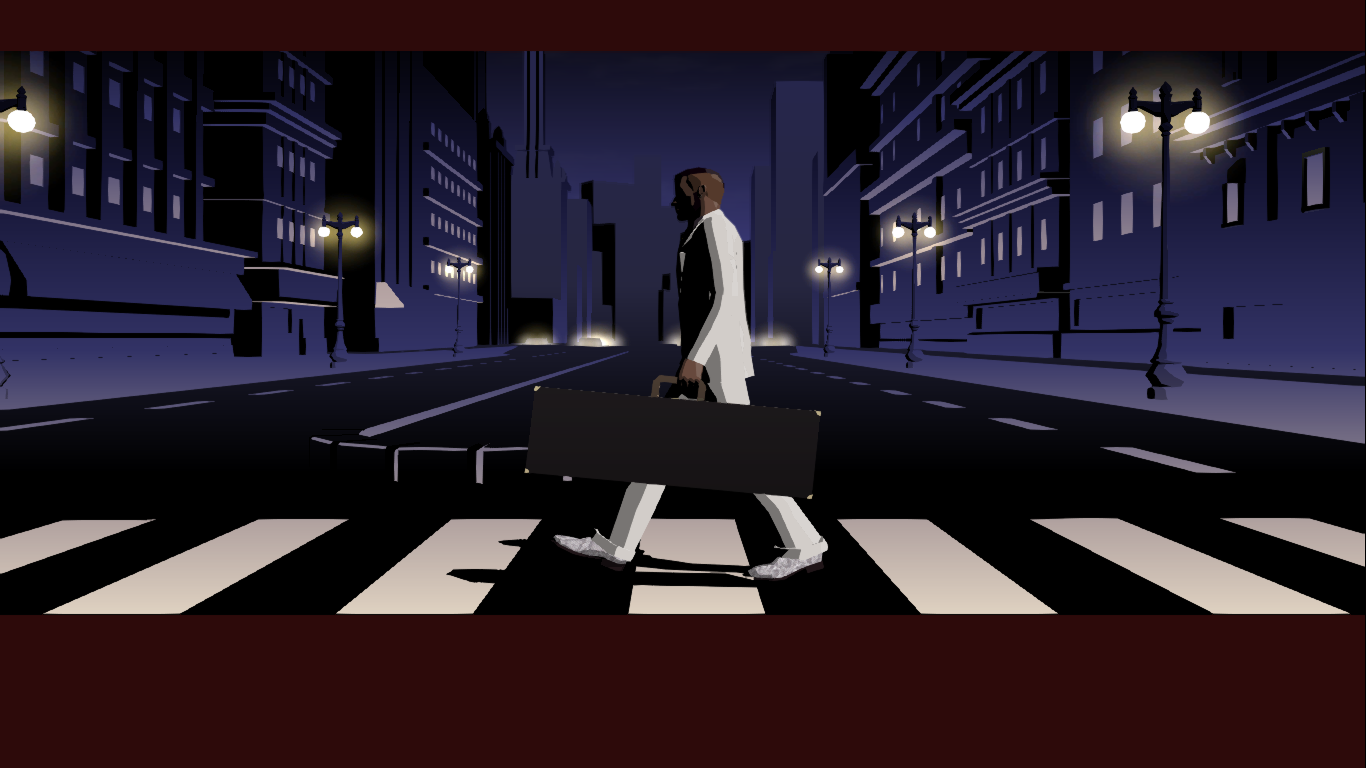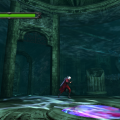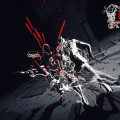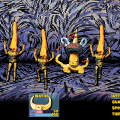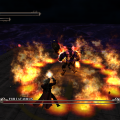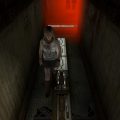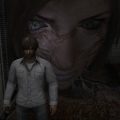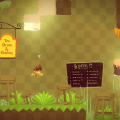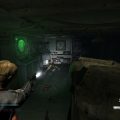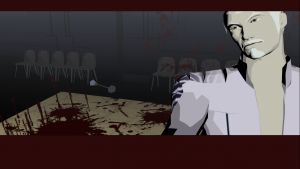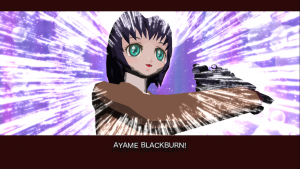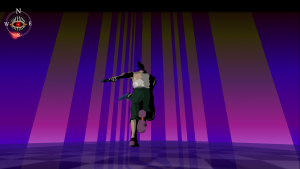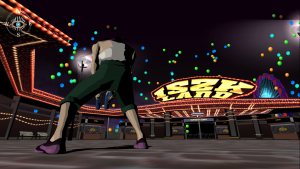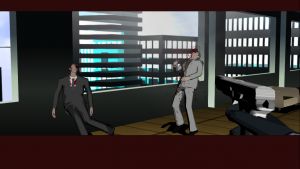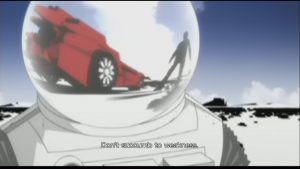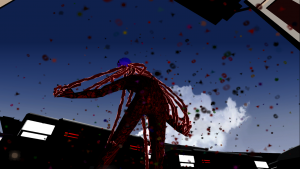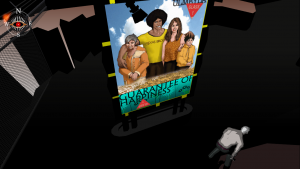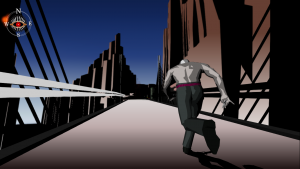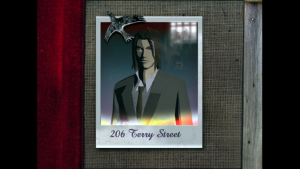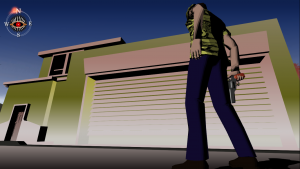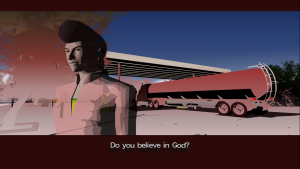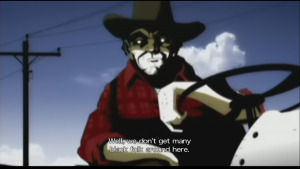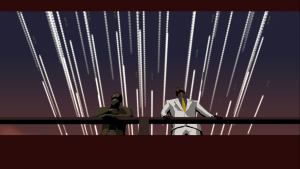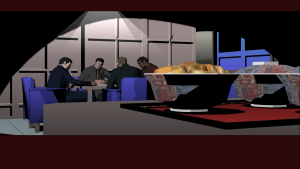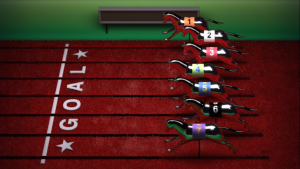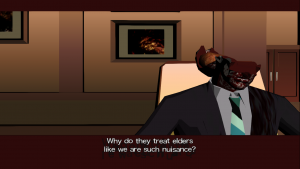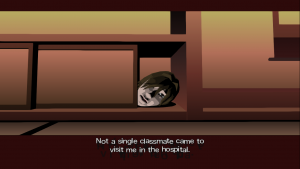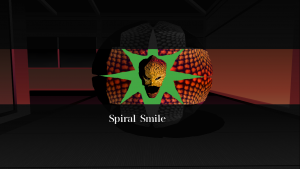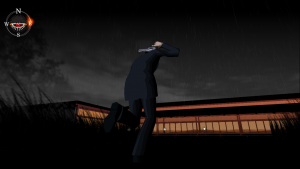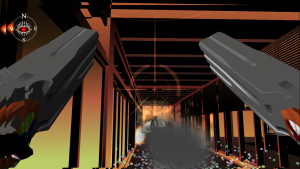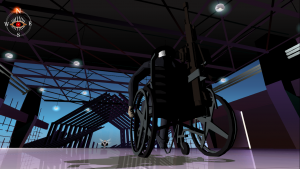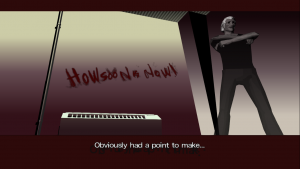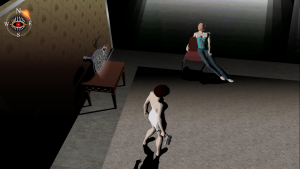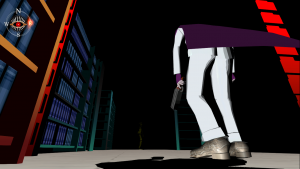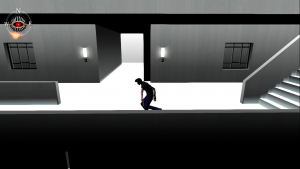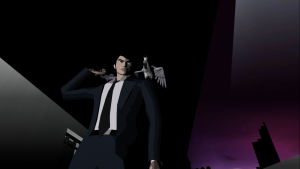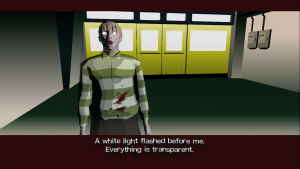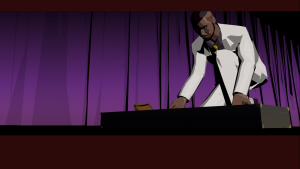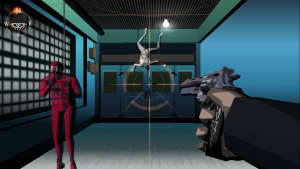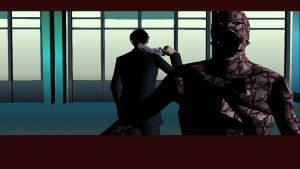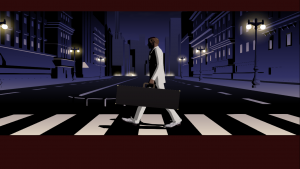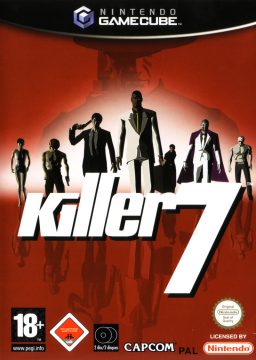
European Box Art
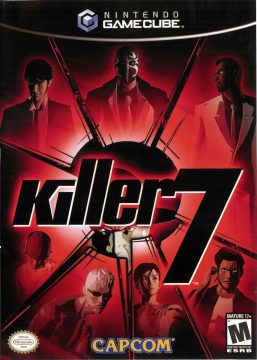
US Box Art
Killer7 is one of the most important games to ever be released in terms of actually talking about games. For decades in the west, ever since Nintendo sold games as toys, our judging of games was mainly focused on design and mechanics in terms of if something was fun or exciting to play. We did care about narrative, but we often talked about them apart from the nuts and bolts, with maybe some exception to the survival horror genre. Even then, a lot of those stories were relatively easy to follow, with only the rare gem like Silent Hill 2 challenging us on what we understood game writing to be. There wasn’t much else challenging us on what a game could be or be capable of.
And then came Killer7.
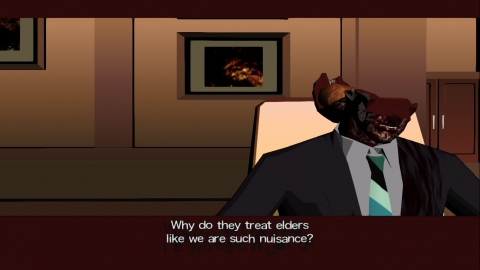
Absolutely nobody knew what to make of SUDA 51’s big western premier, let alone how to score it. There was actual discourse on how you could even talk about it, and those who championed it had trouble explaining why it was so special beyond just the audacity to be completely different. This might also be the single strangest game SUDA had made at this point, since The 25th Ward‘s first mobile releases weren’t out until October (Killer7 got a June release). The fact this was our introduction to him made for one heck of an incomprehensible first impression, complete with multiple callbacks to his previous obscure works and one possible call-forward to The 25th Ward to make it even more confusing (Blackburn’s first person exploration of the hotel at the start of his chapter is almost ripped directly from The 25th Ward‘s first minutes).
One has to imagine this happened because of SUDA’s Moonlight Syndrome, one of those little known games that has gone on to inspire all sorts of unexpected parties, including the Danganronpa team. Shinji Mikami, one of the main figures behind the birth of survival horror, always had a creative streak, and his experimental mind set probably made him interested in SUDA’s work and that game in particular. With an attempt to try and make new IPs for the Gamecube, he somehow got SUDA wrapped up in all this (or possibly the other way around) and worked with him to write and help produce something unlike anything we had seen in games up to that point.
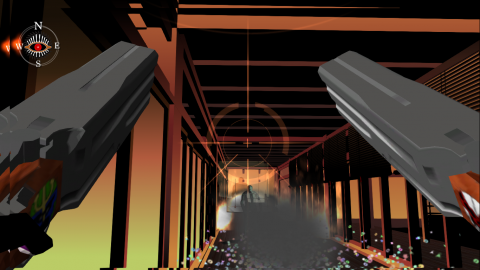
Turns out combining the talents of Capcom and Grasshopper’s talented staff, one of the fifth gen’s more genre pushing minds, and an experimental game designer who used to work as an undertaker and once wrote an ending for a wrestling game that included a surprise suicide did indeed produce something amazing and, at the time, impossible to properly understand or criticize for western critics.
Killer7‘s story is bizarre, and if you dig into extra material made around it, you begin to realize that it barely making any logical sense was there by design. There seems to be a focus on highlighting how inaccurate history truly is, and how we can never truly understand how we got to where we are, both due to the winners writing the books and some events just never witnessed to get a full picture. The story itself follows the Smith Syndicate, a group of assassins who are the only ones in the world who can fight a massive terrorist movement called the Heaven Smiles. The trick with this group is that they’re invisible suicide bomber monsters that come in all sorts of shapes and forms, all giving a maniacal laugh when they finally go boom.
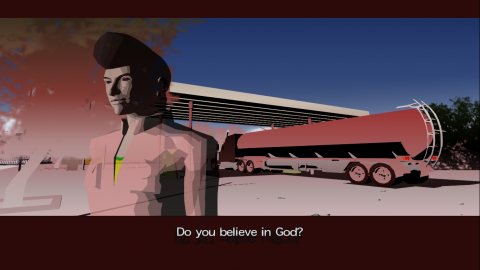
It’s also worth mentioning that war has ended, all nuclear weapons have been destroyed, and some back ground manipulation is leading to the US trying to wipe Japan off the map. Also also, all this seems to be happening is because of two guys who may or may not be mystical beings. Also also also the Smiths are all alternate personalities sharing one body who may or may not completely change said body’s form when one takes over. Also also also also the Smiths see their victims as ghosts and have magical powers like Dragonball style energy bullet shots, using their own blood to destroy barriers, and hitting bullets shot at them with a headbutt, which stops and destroys the bullets. Only the lucador armed with grenade launchers can do that, of course. Oh, and there’s also that part where you fight the corpses of two Japanese politicians who shoot brains at you. Because.
The truly incomprehensible part of Killer7 back then, though, was the very blunt political commentary. Turns out SUDA 51 had thoughts about 9/11 and a lot of cynicism about the Japanese political norms at the time, creating a story about two powerful countries on a slow decline, one by inaction and the other by paranoid self-sabotage.
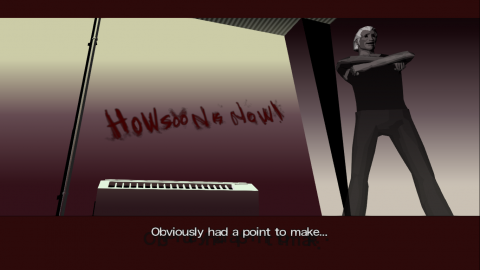
Well, for the first two chapters and the last one. The rest explore more existential ideas, ranging from a man of science turned cult leader to a child slavery ring and a future reading comic artist, which is all peppered with indulgent nonsense like Gorillaz-like cutscenes where Texans complain about that wacky cult and a teenage girl with a giant moe-style anime head who talks like a magical girl while she shoots at you with a machine gun. The weirdest part is that there’s a point to all of this, as the entire game starts reading like the collective frustrations of the team’s anxieties over the modern world, using the wackier moments as contrast for when things get brought down to Earth or into an absurdist horror show.
The bizarre mechanics are meant to push a mood of curiosity and dread, which compliments the narrative well. The idea is you hold down a button to move, and you keep an ear out for laughter. You hear that, it means heaven smiles are nearby, and you need to stop and enter aim mode. Then, you need to scan to make them visible, and gun them down, which can be made faster by finding the glowing critical spot, which also grants thick blood to further upgrade your characters when you reach a save room.
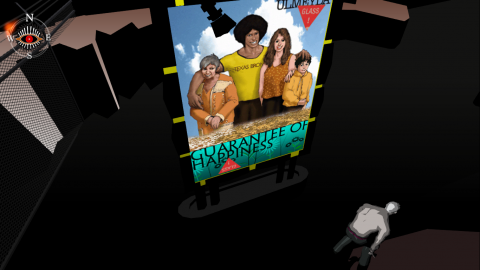
Each of the seven Smiths (with an eighth to unlock in new game+ modes) also controls a bit differently and has their own special set of skills. For example, Kevin lacks power, but his knives are easy to aim and require no reloading, while Dan and Coyote have aiming issues but can deal out more damage. Special abilities are also used for puzzle solving, like taking out Mask if you need to break down a weak wall, or Kaede to destroy an invisible barrier or reveal a secret.
It makes for an easy to understand game that still manages to challenge, with a lot of survival horror staples. The paranoia inducing divide between movement and combat modes is a fairly elegant solution to the tank controls problem, while the thick blood system gives you a sense of constant forward momentum as you power up your team and allow new moves, like a counter for crawling enemies or an auto-lock on certain body parts. Even death is a slap on the wrist, as you just have to go to where you died with Garcian and can revive your downed Smith.
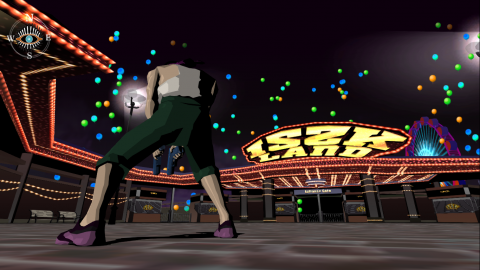
The biggest issue is a lot isn’t explained well in game, including that you can switch between the Smiths just by pausing and picking one out on the upper menu. Once you do start to understand how things function, though, you start to really gel with it, even with a few of the puzzles, though some start to push things (like the dice puzzle, which is entirely luck based).
The base mechanics are very intuitive and engaging, though the slowness of the fights seems to be the main thing that’s kept Killer7‘s gameplay from being copied. As time as gone on, narrative focused adventure games have simply removed combat mechanics from the equation, or made things even more simple by making combat something rarely experienced outside a few sequences. The high number of encounters and grinding for thick blood slows down the pace considerably, even with the limit on how many blood vials you can make in each chapter to level up the Smiths. The combat just isn’t strong enough itself to be entertaining for long stretches, requiring the narrative framing to make it work. This also hurts any desire to try the harder difficulties and challenges.
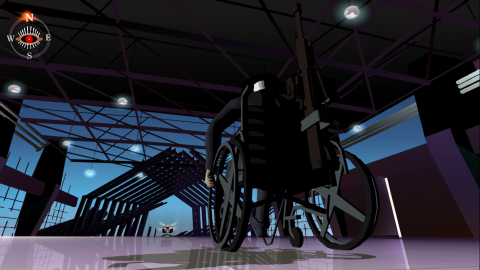
That said, the obvious game artifice slots in with the wider story and how its told quite well, as the absurdity of using a TV to active a blood machine doesn’t clash too hard with a world being manipulated by unknowable god beings that actively warp reality around them. It’s all a twisted reflection of the real world through the filter of game systems and cinematic cutscenes, and certain moments end up getting burned into your mind for their sheer strangeness or the uncomfortably familiar feeling they give off. When the script taps into real world politics and scenarios, it doesn’t hold back, despite some awkwardness in the translation.
There’s an early game bit of dialog where Garcian, the team cleaner, talks with his government contact about the coming conflict with Japan. The US is launching a flurry of missiles out, flying over their heads as they look up and watch, powerless to stop it. The contact, Christopher, comments “what’s sad is that we’ve gotten used to this.” Garcian responds with “that doesn’t necessarily mean that we’re not human,” with Christopher simply quipping back “okay, now you’re not helping.” You wouldn’t think SUDA 51 and Shinji Mikami, of all people, would capture the crippling weariness of the post-9/11 American populace, but they sure did it in just three lines. Killer7 has stood the test of time because, like many of Grasshopper Manufacture’s output, what it has to say and express only seems to get more resonant the more time passes.
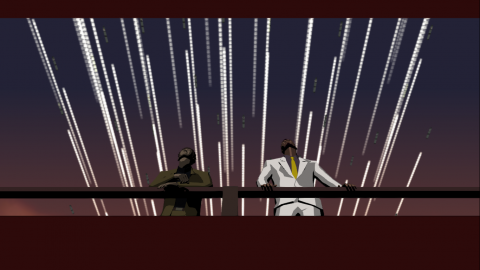
The style doesn’t hurt, either. Killer7 remains one of the most striking games ever made, with a very clean cel-shaded style that trades out textures for simple colors and strong shadows that make the whole game look like a living comic book nightmare, pushed even further by the camera angles of some of the cutscenes. It also does all sorts of other strange things, including multiple animated cutscenes from a variety of talents, a trick from The Silver Case‘s multimedia approach repeated once more.
The sound design is also excellent, with strong backtracks that push a strange yet unnerving feeling, played low enough to let the laughter of the heaven smiles remain perfectly audible. You can thank The Silver Case composer Masafumi Takada for this, creating an impressive score in both range and atmosphere, matching horror tracks and energetic dance beats and exciting music stings almost seamlessly. You will also not be surprised to learn he went on to work with Shinji Mikami on GOD HAND, or, quite fittingly, became a composer for the Danganronpa series.
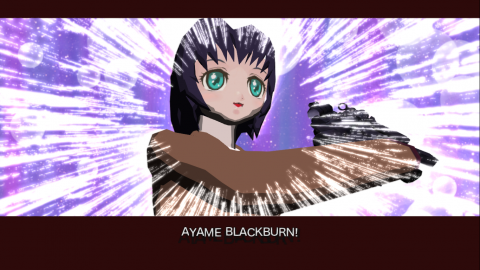
The voice acting is a bit more mixed, but mainly due to direction. The talent on display here is full of veterans, including Tara Strong and Cam Clark, but they’re either poorly cast or given stiff lines to read. It’s better than most of its contemporaries from that era, though, and some stand-out performances still get made. Greg Eagles (Gray Fox from Metal Gear Solid) as Garcian and Michael Gough (Saddler from Resident Evil 4) as Dan give it their all, the former handling the most important character in the game with a grave seriousness, and the latter really playing up Dan’s hot-headed violent streak.
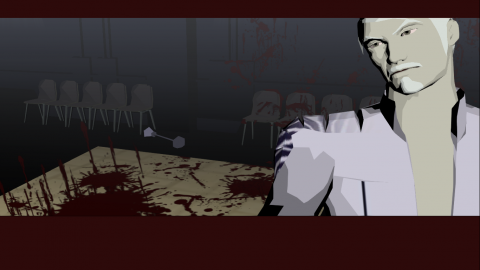
Killer7 is one of those games that you need to experience at least once to really get a good idea of what modern gaming is, because it really pushed the envelope. It remains a complete original, with bits and pieces of its ideas inspiring other games, but few that could ever match its ambition and particular style and substance. Killer7 helped change how we looked at games in the sixth gen, and there’s still so much more to learn from it. It was a bomb on release, but it has never been forgotten since, and its popularity has only grown overtime. Check out the recent PC release if you really want to experience, though do be warned the animated cutscenes are simply stretched out and lose some of the original 4:3 resolution.
